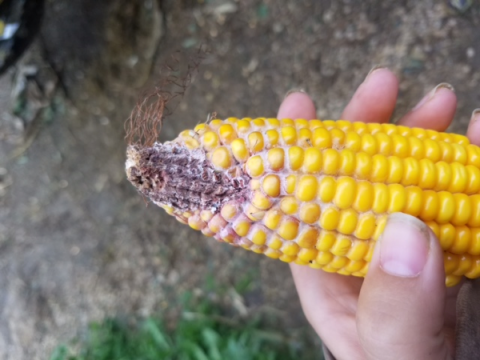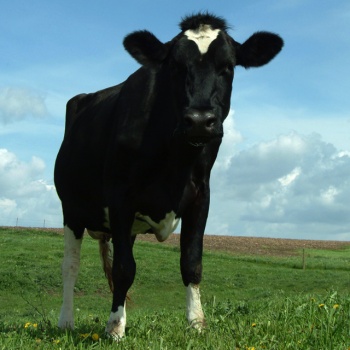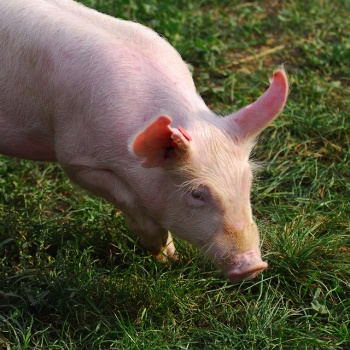Quantity not equal to quality: U.S. beef and dairy producers must remain vigilant to mycotoxin threats

The U.S. is expecting a large corn crop, projected as high as 15.09 billion bushels, and the 2016 wheat crop yields have been at or near record levels in several wheat classes. However, Alltech mycotoxin expert Dr. Max Hawkins has a warning: Quantity should not distract producers from being vigilant regarding quality and the potential for mycotoxin risk.
Hawkins noted the spring wheat harvest across the northern Great Plains experienced wet weather, which led to increased crop stress and Fusarium head blight. Likewise, much of the U.S. Corn Belt experienced above average temperatures and moisture through August, creating the right environment for mold and subsequent mycotoxin issues.
A look at TMR samples from the 2015 harvest
Alltech recently collected more than 100 TMR samples from the U.S., composed of feed crop from the 2015 harvest, and analyzed them through the ISO/ IEC 17025:2005 accredited Alltech 37+® mycotoxin analytical services laboratory, using LCMS/ MS technology to determine mycotoxin presence and growth through the storage months. The 37+ analysis tests for over 37 individual mycotoxins in a given sample and shows the risk that mycotoxins in stored crops can pose to herd health and performance.
Of the samples, nearly 18 percent contained 6–7 mycotoxins, 42 percent had 4–5 mycotoxins, 35 percent had 2–3 mycotoxins, and less than 2 percent had either one mycotoxin or none. Of the mycotoxins present, type B trichothecenes and fusaric acid were most prevalent in 83 percent and 92 percent of the samples respectively.
The toxicity of Fusaric Acid is significantly enhanced when feed is co-contaminated with type B trichothecene or DON. Together, the mycotoxins present in the sample group have a REQ, or risk equivalent quantity, of 187 for beef cattle and 211 for dairy cows. For the dairy cows, this level of risk could represent a 0.5-liter loss in milk production per cow per day.
Symptoms in a herd dealing with type B trichothecenes and fusaric acid might include:
- Anorexia
- Depression
- Diarrhea and other digestive disorders
- Udder edema
- Enlarged mammary glands
- Feed refusal
- Increased somatic cell count
- Increased mortality
- Infertility
- Hemorrhaging
- Lameness
- Lethargy
- Liver damage
- Malformation of the embryo
- Poor antioxidant status
- Reduced milk production, feed efficiency, feed intake, growth, immunity, reproductive performance and rumen function
- Skin lesions
- Stillbirths
- Vomiting
What this could mean for the 2016 harvest
The TMR samples analyzed contained feed crops from the 2015 harvest. However, based on their data, as well as observations from the field, mycotoxin experts expect TMRs from the 2016 harvest could represent an elevated risk.
“The inventory of the 2015 crop is almost fed, and we look forward to the 2016 crop,” said Hawkins. “However, even with a huge crop awaiting, quantity does not indicate quality. Producers should be proactive in investigating and identifying potential issues that can impact herd performance and health.”
Derek Wawack, a member of the Alltech Mycotoxin Management team in Wisconsin, noted that he has been fielding an increasing number of calls, emails and texts about fungal infections.
“Within just the last couple weeks, these fungal infections have really started to show as the summer has progressed,” said Wawack. “Stress from dry to overly-wet conditions, then cooler weather, has allowed these molds to begin growing on the ears.”
Wawack recommends carrying out a 37+ analysis early, even on fresh crop, if possible, and monitoring throughout feed out to stay ahead of any major problems.
“Years where we have seen high levels of both Fusarium and Penicillium in the field have typically led to high mycotoxin levels in storage,” continued Wawack.
“The results have been drastic production losses, loose manure, edema, bloat, conception problems, abortions, bloodshot eyes, bleeding from the ears and nasal passages and even high mortality rates, along with false positive antibiotic tests within milk from the Penicillium mold.




















